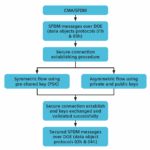The 2025 Design and Verification Conference (DVCon) was a four-day event packed with insightful discussions, cutting-edge technology showcases, and thought-provoking debates. The conference agenda included a rich mix of tutorial sessions, a keynote presentation, a panel discussion, and an exhibit hall with Electronic… Read More
Unlocking the cloud: A new era for post-tapeout flow for semiconductor manufacturing
As semiconductor chips shrink and design complexity skyrockets, managing post-tapeout flow (PTOF) jobs has become one of the most compute-intensive tasks in manufacturing. Advanced computational lithography demands an enormous amount of computing power, putting traditional in-house resources to the test. Enter the … Read More
Getting Faster DRC Results with a New Approach
As IC designs become increasingly complex, traditional Design Rule Checking (DRC) methods are struggling to keep up. The old “construct by correction” approach, initially developed for simpler, custom layouts, is creating substantial runtime and resource bottlenecks. Traditional DRC relies on an iterative, sequential… Read More
Full Spectrum Transient Noise: A must have sign-off analysis for silicon success
Noise minimization is required for advanced analog and radiofrequency (RF) circuits. Unlike digital circuits, where noise is a second-order effect, system performance metrics such as signal-to-noise ratio (SNR), phase noise, timing jitter, and bit error rate (BER) are directly affected in analog and RF designs. Effective… Read More
PSS and UVM Work Together for System-Level Verification
In the early days of the PSS rollout, some verification engineers were suspicious. Just as they were beginning to get comfortable with UVM, here came yet another standard to add to their learning and complexity overhead. Then the fog started to clear; UVM is ideal for block-level testing whereas PSS is ideal for system level testing.… Read More
Heterogeneous 2D/3D Packaging Challenges
A growing trend in system design is the use of multiple ICs mounted in advanced packages, especially in high-performance computing and AI. These modern packages now integrate multiple ICs, often with high-bandwidth memory (HBM), resulting in hundreds of thousands of connections that need proper verification. Traditional… Read More
Averting Hacks of PCIe® Transport using CMA/SPDM and Advanced Cryptographic Techniques
In today’s digital landscape, data security has become an indispensable feature for any data transfer protocol, including Peripheral Component Interconnect Express (PCIe). With the rising frequency and sophistication of digital attacks, ensuring data integrity, confidentiality, and authenticity during PCIe transport… Read More
Reset Domain Crossing (RDC) Challenges
In the early days an IC had a single clock and a single reset signal, making it a simple matter to reset the chip into a known, stable state, so there was little need for detailed analysis. For modern designs there can be dozens to hundreds of clocks, creating separate domains and some use of asynchronous resets, so the challenge of ensuring… Read More
Electrical Rule Checking in PCB Tools
I’ve known about DRC (Design Rule Checking) for IC design, and the same approach can also be applied to PCB design. The continuous evolution of electronics has led to increasingly intricate PCB designs that require Electrical Rule Checking (ERC) to ensure that performance goals are met. This complexity poses several challenges… Read More
Innexis Product Suite: Driving Shift Left in IC Design and Systems Development
At the heart of the shift-left strategy is the goal of moving traditionally late-stage tasks—such as software development, validation, and optimization—earlier in the design process. This proactive approach allows teams to identify and resolve issues before they escalate, reducing costly rework and shortening the overall… Read More










